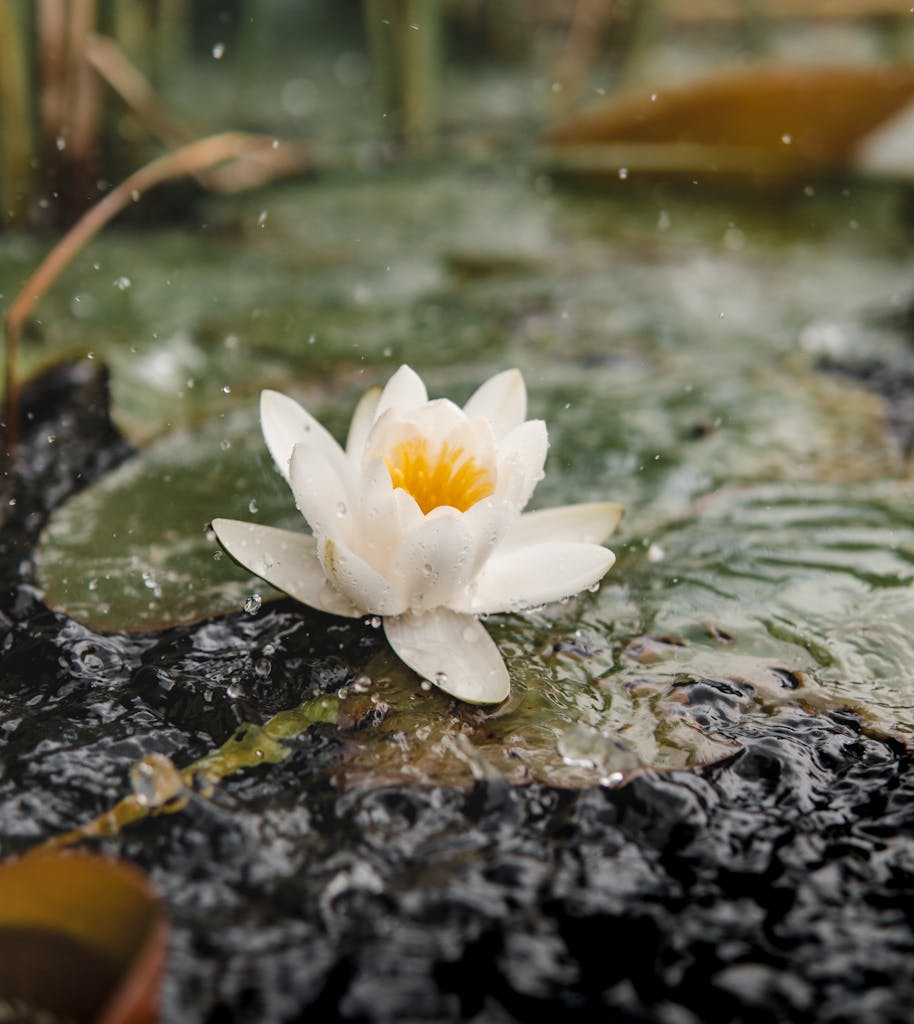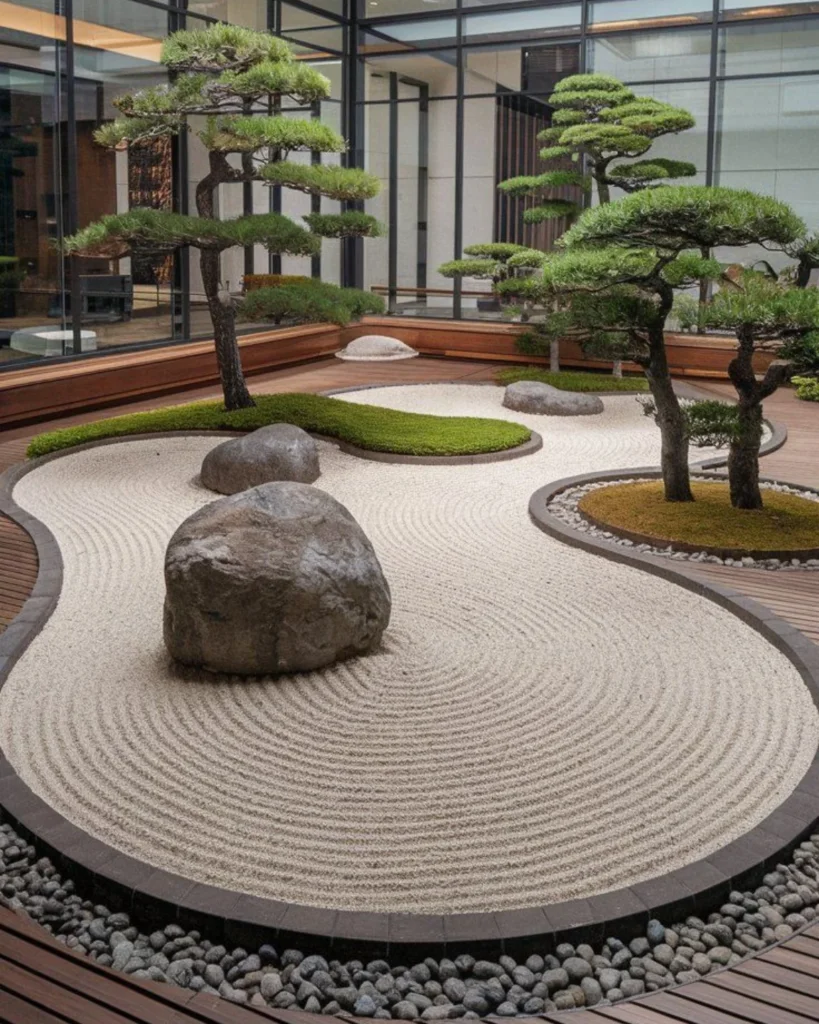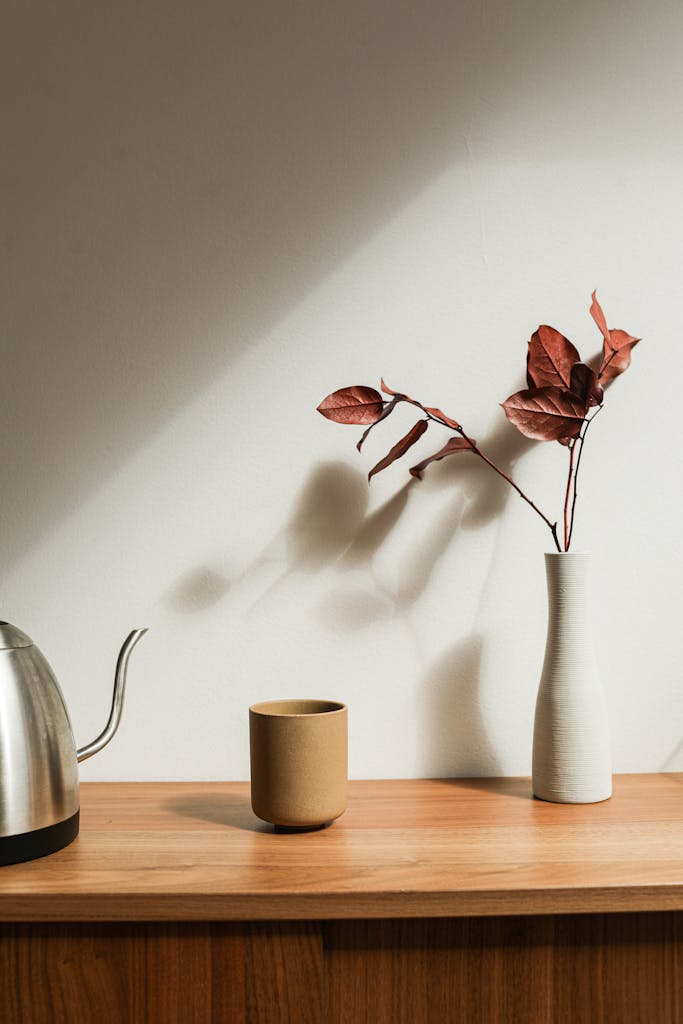
Chances are you’ve previously attempted meditation and ended up wrestling with your monkey mind for twenty minutes, wondering if enlightenment was supposed to feel this frustrating. I get it—I spent years thinking mindfulness meant sitting cross-legged until my legs went numb. But here’s what changed everything for me: discovering these seven Japanese Zen techniques that actually work in real life, not just on meditation cushions. They’re surprisingly practical, and honestly, some might challenge what you think you know about finding inner peace.
Key Takeaways
- Practice zazen meditation with straight spine, natural breathing, and focus on the hara (lower abdomen) for grounded awareness.
- Transform daily tea preparation into moving meditation through ritualized gestures and deliberate, precise movements.
- Create walking meditation practice in spaces with asymmetrical arrangements, empty areas, and natural imperfect elements.
- Use mindful breathing techniques focusing two inches below the navel to connect mind and body effectively.
- Embrace imperfections in daily activities as opportunities for deeper self-acceptance and present-moment awareness.
Zazen: The Art of Seated Meditation
When I first heard about zazen meditation, I’ll admit I thought it was just fancy sitting—turns out there’s actually a whole art to it. This sitting meditation became my secret weapon for developing unshakeable focus and mental clarity.
The practice of meditation through zazen follows a three-step formula that actually works: adjust your body with a straight spine, breathe naturally through your nose, and rest your attention on your lower abdomen. I spent months fidgeting before realizing the power comes from “just sitting” without chasing specific experiences. Your gaze stays a few feet ahead, your breath flows naturally, and you maintain that wakeful presence.
Zen meditation isn’t about emptying your mind—it’s about developing the kind of steady awareness that gives you a serious advantage. The early morning hours provide the perfect environment for zazen practice, offering that precious quiet stillness before the world awakens and distractions begin to multiply.
Mindful Breathing Through the Hara

After months of trying to breathe “properly” during meditation, I discovered that focusing on my hara—that spot about two inches below your navel—completely changed everything. This Japanese Zen technique transforms your entire practice by shifting attention from your chest to your energetic center. You’ll notice deeper relaxation within just three sessions, trust me.
Sit comfortably, place one hand on your chest and another on your lower abdomen. Breathe naturally, feeling your hara rise and fall while keeping your chest relatively still. This isn’t about forcing anything—just gentle awareness.
The hara acts like your body’s command center, connecting mind and body for powerful results. You’ll experience lower stress levels, better emotional control, and that grounded confidence successful people radiate naturally. For those with ADHD, this centered breathing approach can be particularly beneficial since executive functions like decision-making are processed differently in their brains.
Walking Meditation in Zen Gardens

You’ll discover that Zen gardens aren’t just pretty landscapes, they’re actually designed as outdoor meditation studios where every rock, rake mark, and pathway serves a specific purpose.
When you practice walking meditation here, you’re not just strolling around aimlessly, you’re engaging with centuries-old design principles that guide your attention to each deliberate step on the gravel.
The beauty lies in how these gardens force you to slow down, breathe deeply, and notice details you’d normally rush past, transforming a simple walk into a powerful mindfulness practice.
Just as changing your desktop background to seasonal imagery can refresh your daily digital experience, these gardens offer a natural way to renew your mental state through mindful observation.
Garden Design Principles

Since I first stepped into a traditional Japanese Zen garden three years ago, I’ve discovered that these carefully crafted spaces aren’t just pretty landscapes—they’re actually outdoor meditation studios designed to slow down your racing mind. These mindfulness practices from Japanese culture tap into the essence of nature through brilliant design principles that’ll transform how you approach inner peace.
Here’s what makes Zen gardens so powerful for contemplation:
- Asymmetrical rock arrangements that mirror nature’s unpredictable beauty
- Raked gravel patterns representing water’s flowing movement
- Strategic empty spaces that give your mind room to breathe
- Imperfect elements celebrating life’s transient moments
- Subtle plant choices creating gentle focal points
You’re not looking at random decoration—you’re experiencing centuries of wisdom condensed into physical form that commands respect and delivers results.
Mindful Walking Techniques
While most people think walking meditation means wandering around aimlessly like you’re lost at the mall, true Zen walking meditation—called kinhin—requires the kind of focused attention that’ll make your usual power walks seem frantic and pointless.
In Japanese Gardens, you’ll master this mindfulness technique by taking deliberate, slow steps while keeping your spine straight and shoulders relaxed. Feel each foot connect with the ground, synchronizing your breath with every movement. This isn’t about covering distance—it’s about commanding your attention like a CEO commands a boardroom.
Zen Buddhism teaches that this walking meditation transforms scattered thoughts into laser-focused awareness. You’ll notice reduced stress within weeks, sharper mental clarity, and a deeper connection to nature that’ll make your outdoor experiences feel more powerful and intentional.
Present Moment Awareness
As you begin your walking meditation in a Zen garden, your phone’s probably buzzing with notifications, your mind’s running through tomorrow’s to-do list, and you’re wondering if this whole “present moment” thing is just fancy talk for daydreaming.
- Sync your steps with breath – Take 3-4 seconds per step, inhaling for two steps, exhaling for two
- Focus on texture details – Feel gravel crunching, smooth stones, rough bark under your fingertips
- Count deliberate movements – Lift, move, place each foot with military precision
- Observe water sounds – Listen to trickling fountains or rustling leaves for 30-second intervals
- Practice mindfulness anchoring – When thoughts drift, return attention to your heel-to-toe contact
This state of mind creates genuine sense of tranquility, transforming scattered mental energy into laser-focused awareness that’ll serve you well beyond the garden.
Tea Ceremony as Moving Meditation

When you practice the Japanese tea ceremony, you’re not just making tea—you’re entering a world where every precise movement becomes a form of moving meditation. The ritualized gestures, from the way you hold the bamboo whisk to how you present the bowl to your guest, train your mind to stay completely focused on each present moment.
I’ll admit, it took me about six months of weekly practice to stop feeling like I was performing surgery every time I measured the matcha powder, but that sacred connection between host and guest creates something genuinely transformative. Like the mindful preparation of wildflower tea ceremonies, these intentional brewing rituals transform an everyday act into a moment of spiritual renewal and present-moment awareness.
Ritualized Mindful Movement
If you’ve ever watched someone perform the Japanese tea ceremony, you might’ve thought they were moving in slow motion—and honestly, that’s exactly the point. This Zen Buddhist practice transforms ordinary movements into powerful meditation practice, giving you complete control over your mental state.
Every gesture becomes intentional, every breath purposeful. You’re not just making tea—you’re mastering mindfulness through deliberate action. The Japanese tea ceremony teaches you that power comes from precision, not speed.
Here’s how ritualized movement amplifies your mindfulness:
- Focus entirely on one movement at a time
- Breathe deeply with each gesture
- Notice physical sensations in your hands
- Maintain awareness of your posture
- Embrace imperfections as part of the process
This moving meditation builds mental discipline that translates into real-world authority.
Present Moment Awareness
While other forms of meditation ask you to sit still and fight your wandering thoughts, the tea ceremony flips that script entirely—you’re moving, but you’re more present than you’ve ever been. Unlike zazen seated meditation where I’d fidget for twenty minutes, tea ceremony keeps my hands busy while my mind settles naturally.
You’re paying attention to water temperature, the sound of steam, the weight of the cup—there’s no room for stress about tomorrow’s deadlines. Each deliberate movement becomes an anchor to now, and honestly, it’s way easier than trying to empty your brain on command.
This moving meditation improves mental health by teaching you to reduce stress through focused action rather than forced stillness.
Sacred Host-Guest Connection
The most striking thing about tea ceremony isn’t the careful movements or the perfect measurements—it’s how the space between host and guest becomes sacred without anyone saying a word. You’ll discover that mindfulness emerges naturally when you honor the host-guest relationship with genuine reverence.
This ancient practice transforms ordinary interactions into something profound:
- Create intentional silence – Let pauses speak louder than words
- Move with deliberate grace – Every gesture carries meaning and respect
- Focus on serving others – True power comes from elevating those around you
- Practice deep listening – Hear what isn’t being said through body language
- Embrace impermanence – Each moment together is unrepeatable and precious
You’re not just sharing tea—you’re creating a sacred container where both people can experience authentic connection and mutual understanding.
Wabi-Sabi: Embracing Imperfection Mindfully

Since discovering wabi-sabi three years ago during my messy divorce, I’ve learned that this Japanese philosophy isn’t about giving up on excellence—it’s about finding beauty in the cracks. You’ll discover that wabi-sabi, rooted in Zen Buddhism, teaches you to embrace life’s imperfections rather than fight them. When I practiced zazen seated meditation, I stopped obsessing over my wobbly posture and found peace in simply being present.
This Buddhist mindset transforms how you view setbacks. Instead of seeing your chipped coffee mug as damaged, you’ll appreciate its unique character. Wabi-sabi challenges that Western perfectionism that’s probably driving you crazy anyway. You’ll develop genuine self-acceptance when you realize that flaws aren’t failures—they’re proof you’re human, not a robot. Learning to love yourself again takes time and patience, but these small steps toward embracing imperfection can lead to significant changes in how you treat yourself.
Present-Moment Awareness in Daily Activities
Five months after embracing wabi-sabi, I discovered that Zen mindfulness isn’t just for meditation cushions—it’s hiding in your kitchen sink. The practice of Zazen transforms daily life when you bring that same focused attention to ordinary moments.
The most profound meditation happens not on a cushion, but while scrubbing plates and folding laundry with complete presence.
You’ll access serious mental power by treating mundane tasks as mindfulness training grounds. This aspect of mindfulness strengthens both your physical and mental presence simultaneously.
- Feel every bubble while washing dishes—notice temperature, texture, and sound
- Count your footsteps during a two-minute walk, focusing on ground contact
- Savor each bite during meals instead of scrolling your phone
- Notice your breathing for 30 seconds between tasks
- Feel the weight of objects you’re carrying or moving
These simple habits become powerful tools for clearing the mind and establishing daily meditation practice that seamlessly integrates with your existing routine.
Loving-Kindness Meditation for Inner Peace

How do you transform irritation at your coworker into genuine compassion? You’ll discover the answer through loving-kindness meditation, a traditional Japanese practice that’s surprisingly powerful for driven individuals like yourself.
This form of seated meditation involves repeating phrases like “May I be happy, may I be safe” for five minutes daily. Start with yourself, then extend these intentions to loved ones, neutral people, and yes, even that annoying colleague who steals your lunch.
I’ve watched executives in Japan around Tokyo use this technique to cope with depression and workplace stress. The practice literally rewires your brain’s empathy centers within weeks.
You’re not becoming soft—you’re developing emotional intelligence that gives you an edge in negotiations and leadership situations. Regular practice develops thicker gray matter in emotional regulation regions, giving you the mental brakes to respond thoughtfully rather than react impulsively in challenging interactions.
Conclusion
You’ve got seven solid techniques now, and honestly, you don’t need to master them all at once. Start with just one that speaks to you – maybe zazen if you’re feeling ambitious, or hara breathing if you want something gentler. Practice it for two weeks, then add another. Recall, even Buddhist monks didn’t become zen masters overnight, so cut yourself some slack and enjoy the journey.





Pingback: 15 Holistic Healing Practices for Everyday Wellness